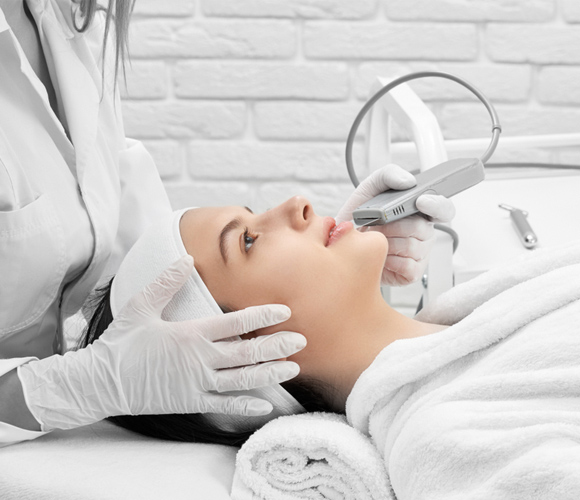Skin infections can sneak up on anyone, turning a simple itch or rash into something more bothersome. Whether it's a stubborn fungal issue like athlete's foot or a bacterial problem causing boils, understanding Skin brightening treatment is key to getting back to smooth, healthy skin. In this article, we'll explore effective ways to tackle these common culprits, from over-the-counter options to professional approaches. If you've ever wondered how to differentiate between fungal and bacterial skin infections and what treatments work best, you're in the right place.
Understanding Fungal and Bacterial Skin Infections
Before diving into treatments, it's helpful to know what you're dealing with. Fungal infections, often caused by yeasts or molds, thrive in warm, moist areas of the body. Bacterial infections, on the other hand, stem from harmful bacteria invading the skin through cuts or weakened barriers.
These issues aren't just cosmetic—they can lead to discomfort, spreading, or even complications if left untreated. Recognizing symptoms early, like redness, itching, or pus, can make all the difference in choosing the right dermatological treatment.
Common Types of Fungal Infections
Fungal skin infections are incredibly prevalent, affecting millions worldwide. Ringworm, for instance, isn't caused by a worm but by fungi that create circular, itchy patches. Athlete's foot targets the feet, leading to cracking and peeling skin, while jock itch affects the groin area.
Yeast infections, such as those from Candida, often appear in folds of skin, causing red, moist rashes. These conditions love humidity, making them common in athletes or those in tropical climates.
Common Types of Bacterial Infections
Bacterial skin infections vary widely but often start small and escalate quickly. Impetigo, a highly contagious issue, shows up as honey-crusted sores, usually on the face. Folliculitis inflames hair follicles, resembling pimples, and can stem from hot tub use or shaving.
More serious ones like cellulitis involve deeper layers, causing swollen, painful areas that feel warm. Staph and strep bacteria are frequent offenders, entering through minor breaks in the skin.
Effective Treatments for Fungal Infections
When it comes to treating fungal infections, dermatologists often recommend starting with topical solutions. These antifungal creams or ointments target the fungus directly on the skin's surface, minimizing side effects.
For milder cases, over-the-counter options like clotrimazole or terbinafine can clear things up in a couple of weeks. Apply them consistently, even after symptoms fade, to prevent recurrence.
Oral Medications for Stubborn Fungal Issues
If topical treatments aren't enough, especially for widespread or nail-involved infections, oral antifungals might be the next step. Drugs like fluconazole or itraconazole work systemically to eradicate the fungus from within.
These are particularly useful for tinea infections that affect the scalp or body extensively. Always follow the prescribed duration to avoid resistance.
Home Remedies and Supportive Care
While not a substitute for medical treatments, some natural aids can complement dermatological approaches. Tea tree oil, with its antifungal properties, can soothe mild symptoms when diluted.
Keeping the affected area clean and dry is crucial—fungi hate dry environments. Wear breathable fabrics and avoid sharing towels to curb spread.
Proven Treatments for Bacterial Infections
Bacterial skin infections often require antibiotics to knock out the invading microbes. Topical antibiotics, such as mupirocin, are great for localized issues like impetigo, applied directly to prevent further infection.
For deeper or spreading cases, oral antibiotics like cephalexin or dicloxacillin might be necessary. These work by inhibiting bacterial growth, allowing your immune system to take over.
Managing Severe Bacterial Cases
In more intense scenarios, such as abscesses, drainage might be needed alongside antibiotics. This helps remove pus and speeds healing.
For recurrent infections, identifying underlying causes—like diabetes or weakened immunity—is vital for long-term management.
Preventive Measures to Avoid Recurrence
Prevention is always better than cure when it comes to skin infections. Here are some practical tips:
- Maintain good hygiene: Wash hands frequently and shower after sweating.
- Protect your skin: Use barriers like gloves for manual work and avoid tight clothing in humid weather.
- Boost immunity: A balanced diet rich in vitamins can help your body fend off infections.
- Dry thoroughly: Pat skin dry after bathing, especially in folds and between toes.
- Avoid irritants: Steer clear of harsh soaps that disrupt your skin's natural barrier.
Incorporating these habits can significantly reduce the risk of both fungal and bacterial issues.
When to Seek Professional Help
Not all skin problems resolve on their own. If symptoms persist beyond a week, worsen, or include fever, it's time to consult a dermatologist. They can perform tests, like skin scrapings or cultures, to confirm the infection type and tailor treatments accordingly.
Early intervention prevents complications, such as scarring or systemic spread, ensuring quicker recovery.
Conclusion
Dealing with fungal and bacterial skin infections doesn't have to be overwhelming. From antifungal creams for itchy rashes to antibiotics for pus-filled sores, dermatological treatments offer reliable solutions tailored to your needs. By understanding the differences, opting for appropriate care, and adopting preventive strategies, you can keep your skin healthy and infection-free. Remember, consistent hygiene and prompt attention to symptoms go a long way. If you're facing persistent issues, professional guidance can make all the difference in reclaiming comfortable, clear skin.





Comments